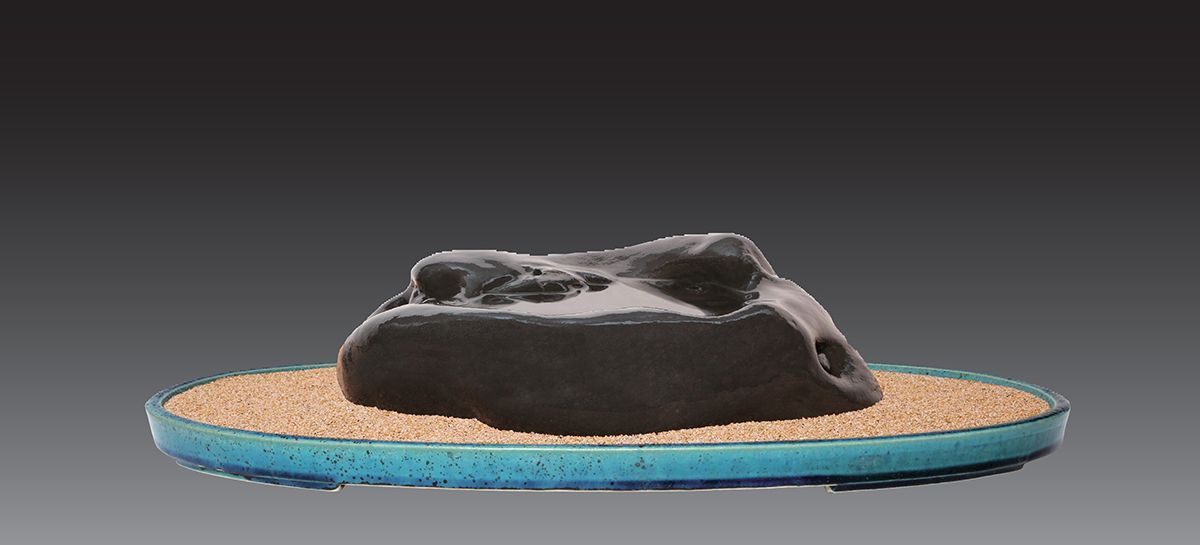Viewing Stones of the Namhan River, Korea
Introduction to the viewing stones of the Namhan River, Korea
By Thomas S. Elias June, 2023
Korea has a long history of appreciating unusual and interesting stones. Chinese practices influenced this history until the Koreans focused on their own distinct stones, Suseok, and their display methods. These methods are intermediate between the often elaborate Chinese style and the minimalist approaches by Japanese stone collectors. The distinct Korean style is well illustrated in this article on Suseok from the Namhan River. Mr. Park Youl, a long-time collector of Korean stones, supplied information and photographs used here. The photographs in this article were published in The 2nd IIsengilseok One Life, One Stone Exhibition (2019) and are used with permission.
Mr. Park, a businessman in Incheon, has been collecting Korean stones for fifty years and has assembled one of the finest private collections in his country. He has purchased many of his stones from dealers. Park prefers natural, unaltered stones that are black or dark gray, or chocolate colored and with a soft like glass surface when he touches them. He said that many stone collectors like stones that have been transformed in rough water and sand for millions of years and develop wrinkles on their faces that become dry and twisted with age.
South Korea is mainly mountainous, with roughly one-third of its area in low-lying areas, principally in western and northwestern South Korea. Unlike Japan, mainland South Korea is geologically stable, with no active volcanos. There are considerable Precambrian and Cambrian age rocks dated 500 million years old or older. Recent sedimentary rocks are found in lowlands, especially in alluvial fans from deposits in the last 50 million years. Some of the islands belonging to Korea were formed from ancient volcanic activity, such as Jeju Island, which lies midway between Korea and Japan. The volcanic cone on Jeju is the highest peak in South Korea at 1,950 meters (6,398 feet).
Numerous rivers run from the two main mountain chains in the country. The Sobaek Mountains are more centrally located, while the Taebaek range runs north and south along the eastern part of South Korea. The Namhan River originates in central Korea in the Sobaek Mountains and flows northwest. It is a tributary of the Han River, which eventually flows into the Yellow Sea. The Namhan is the second-longest river in South Korea and is one of the most important sources of river stones in South Korea. This river is known for its clear waters and beautiful scenery along its course. Different types of rocks are carried down as the waters wear through layers of rock. They are subjected to erosion by water and sand as they are carried downstream. Some of these stones have smooth, rounded surfaces with interesting patterns or forms.
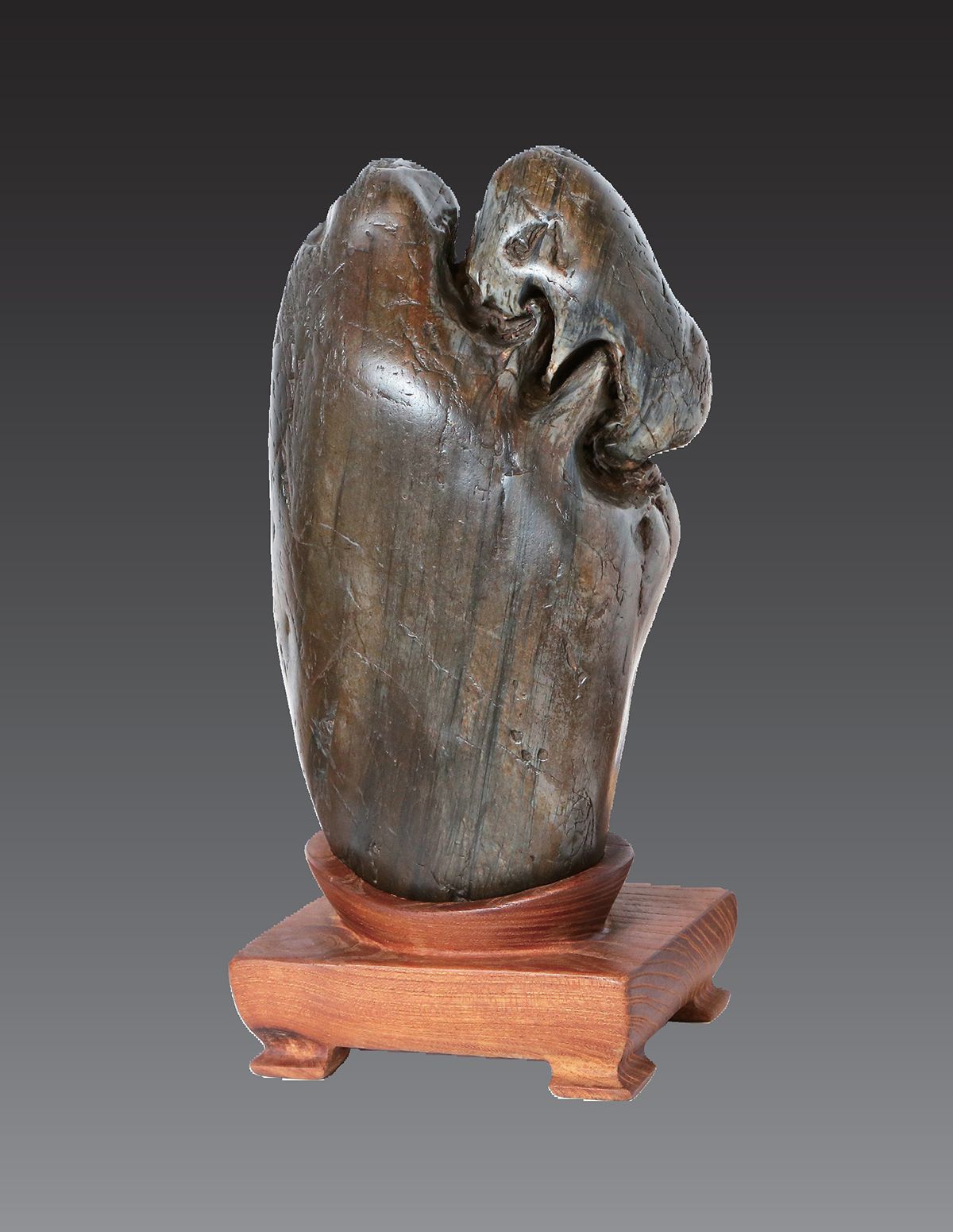
Two Namhan river stones are displayed in sharply contrasting wood bases. The lighter-colored base is a more traditional style base with a raised socket lip and prominent legs. The contemporary style base on the right has an upright, narrowly triangular spike on top of a rough left side. The bottom half and the base’s right side have been sanded and polished to highlight the grain in the wood.
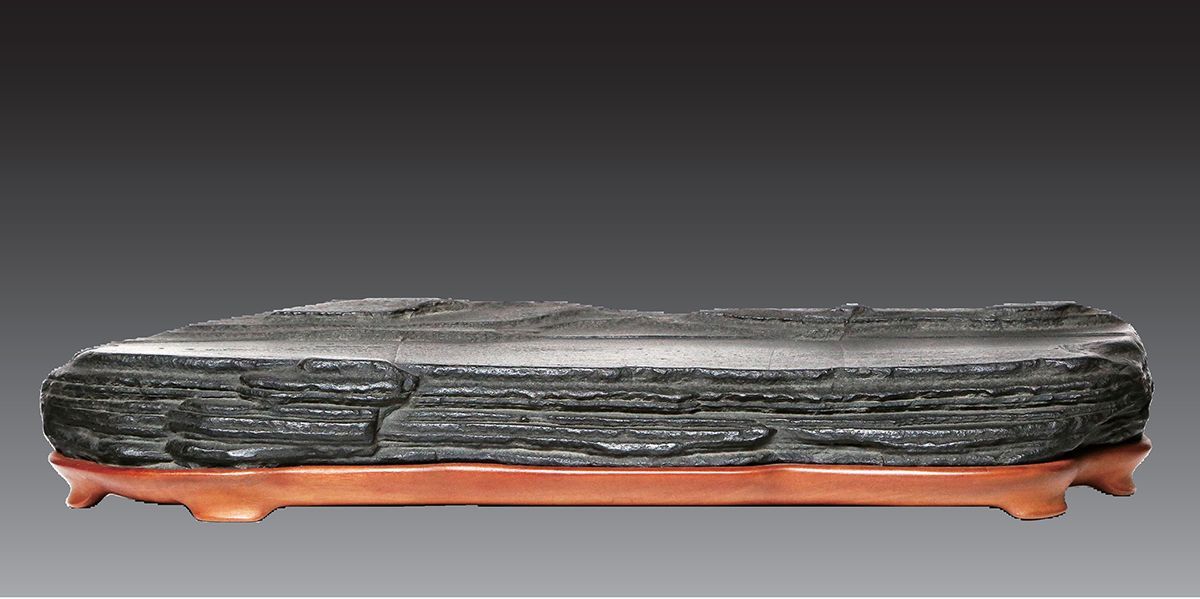
The thin or shallow base with simple feet is in harmony with the etched layers in this smooth black stone. Did this rock's shape dictate the base's form, or has this base’s style been influenced by Japanese style bases? Regardless, it is a beautiful and impressive display of this Namhan River stone.
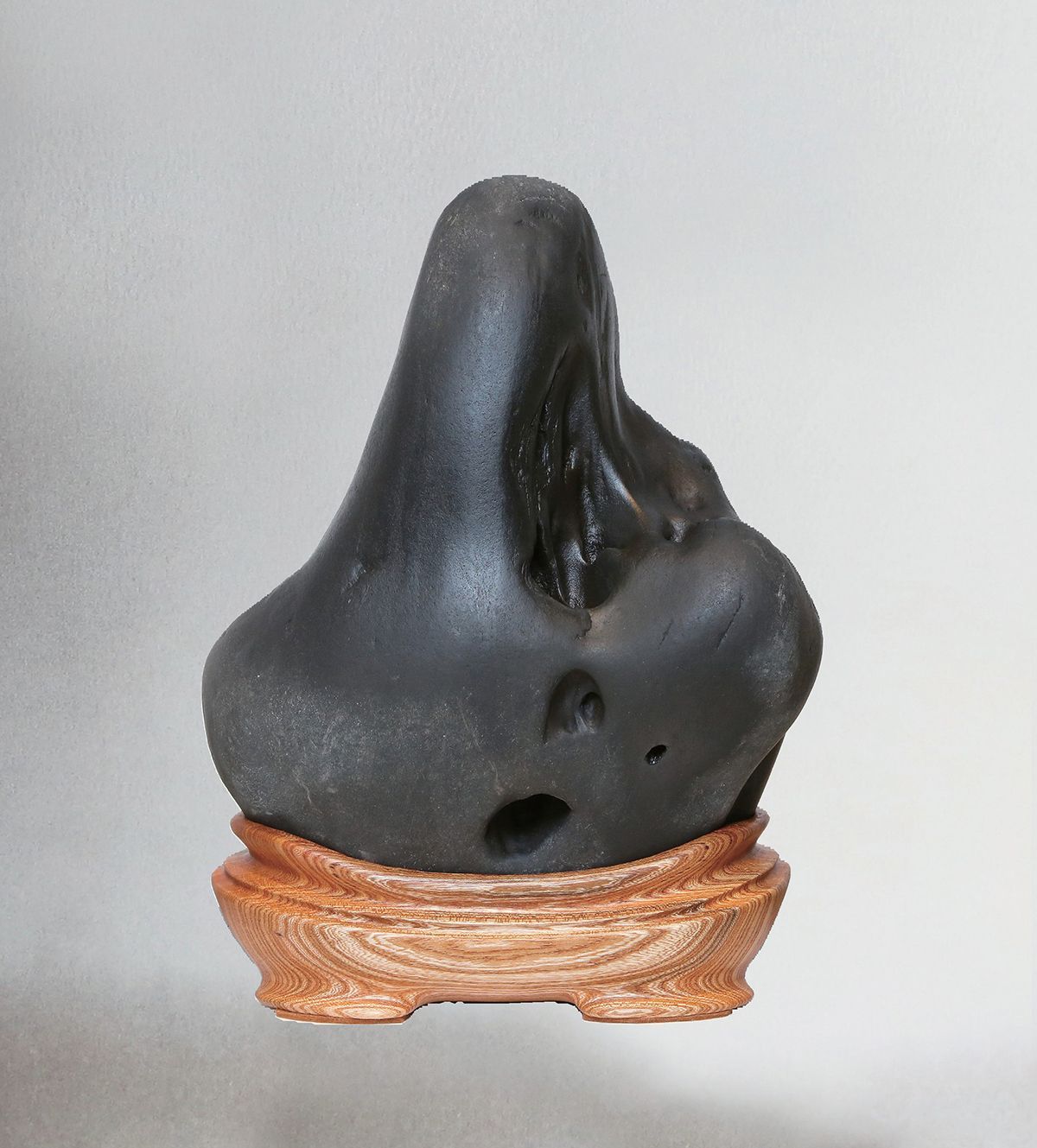
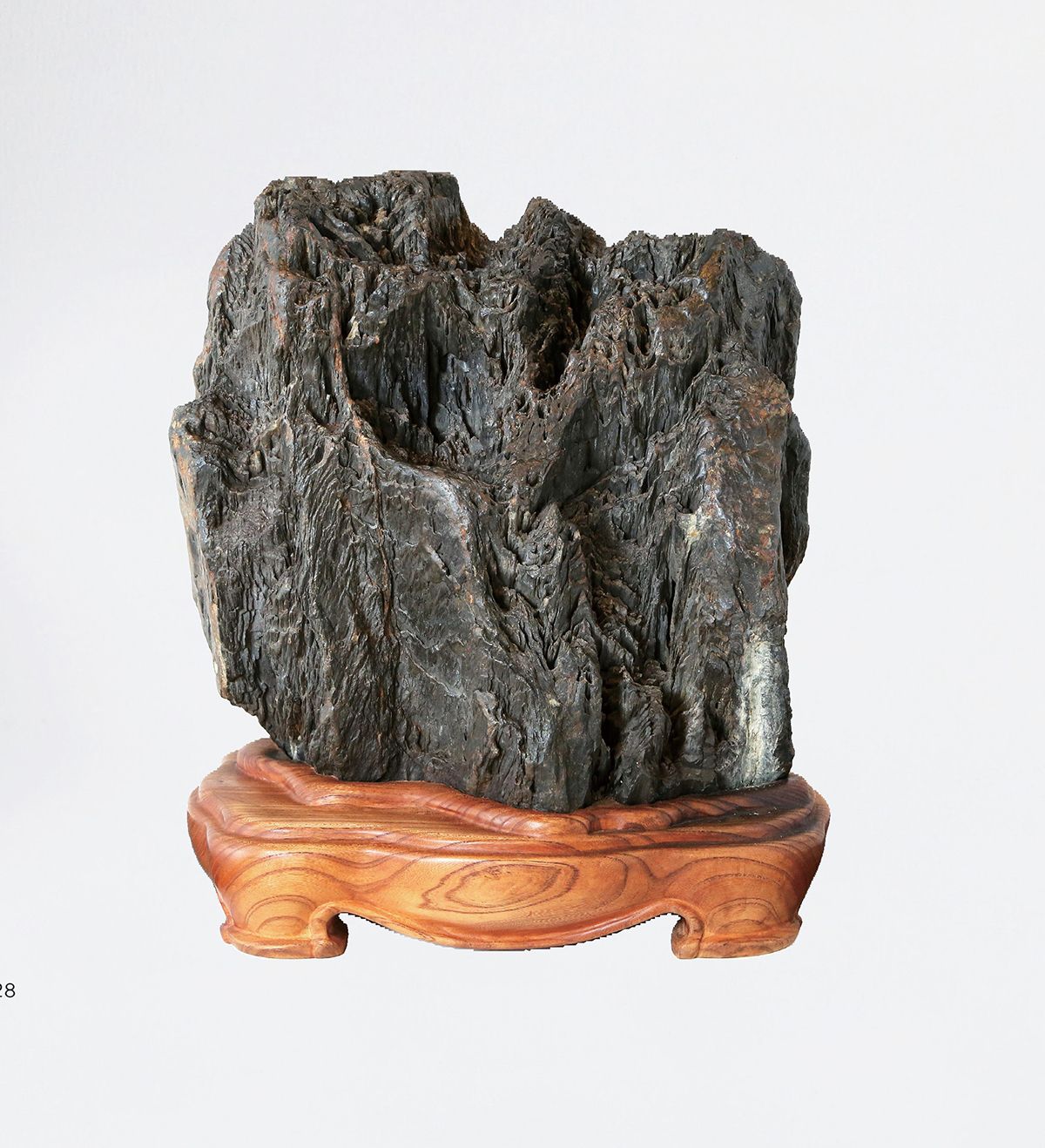
A rectangular light blue glazed suiban complements the strong, rugged landscape stone with a central tunnel. Pale blue is a common color seen in Korean suiban used to display suseok. This stone is 40 x 20 x 24 cm.
The vertically oriented stone in a traditional base is 24 x 47 x 15 cm. This rugged dark abstract-shaped stone evokes strength. It is 26 x 25 x 12 cm.
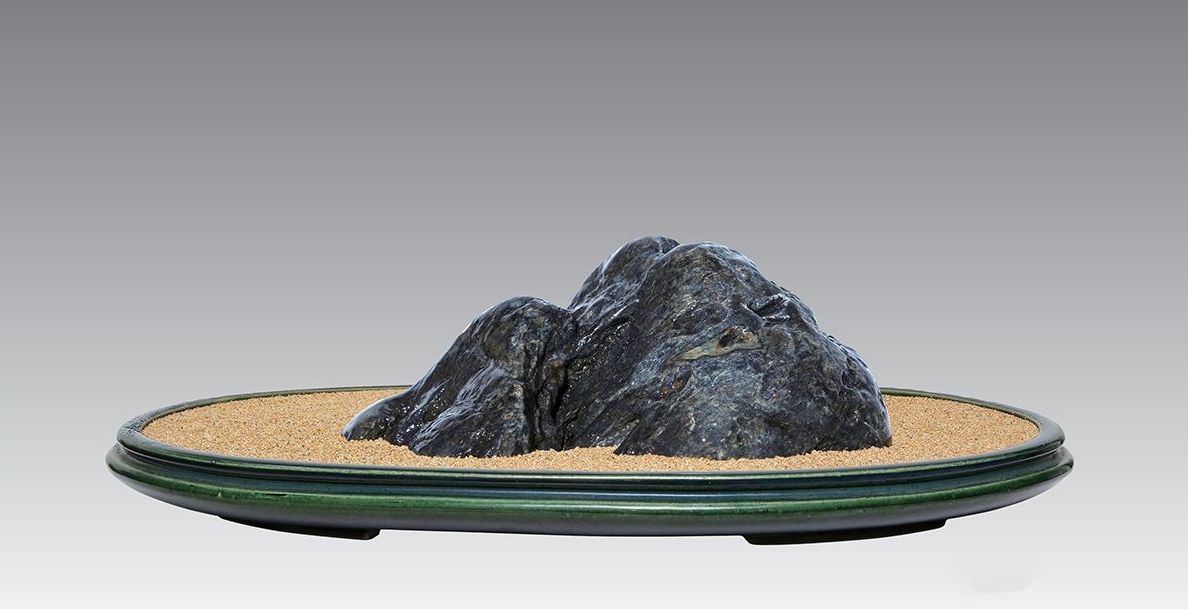
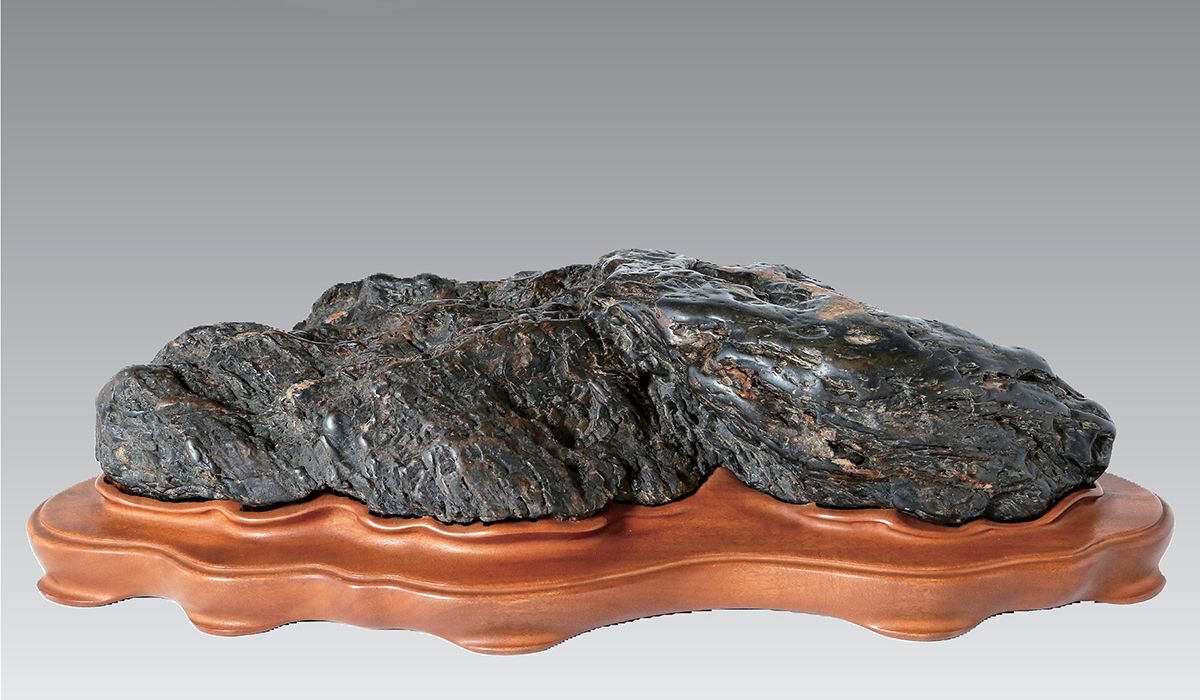
To see more Namhan River stones, go to: https://m.youtube.com/watch?v=914ltsLBvwg&feature=youtu.be#bottom-sheet

